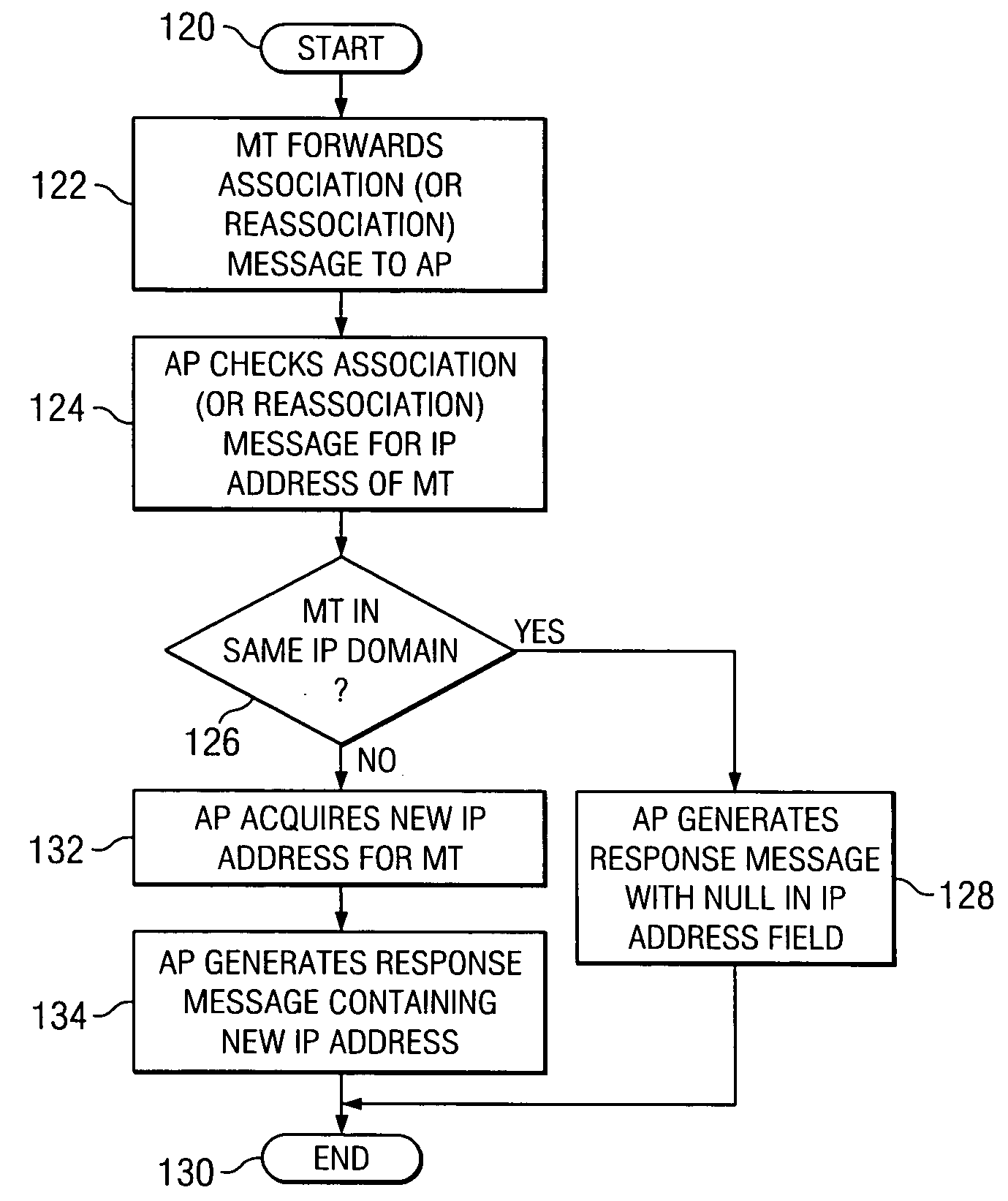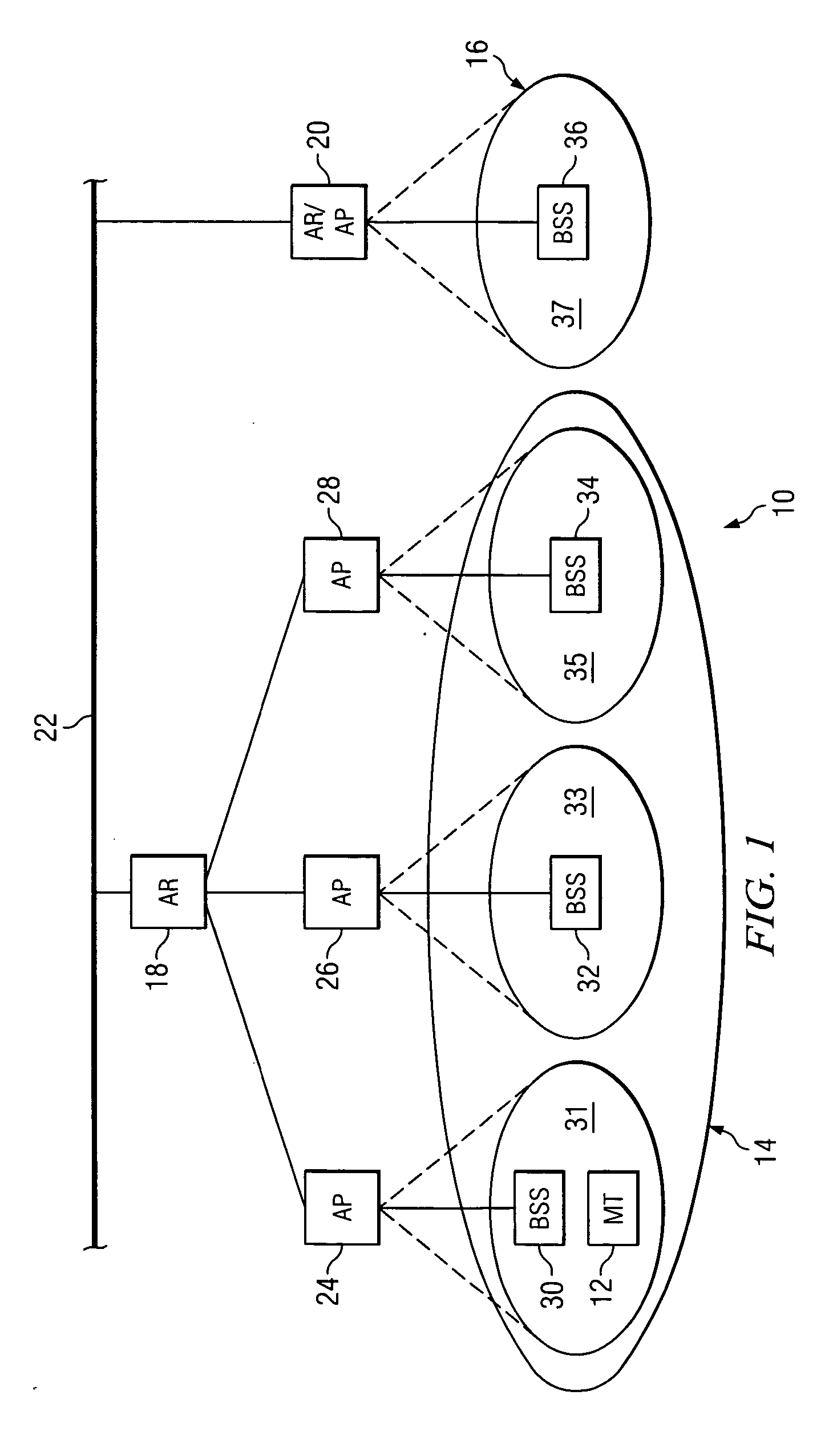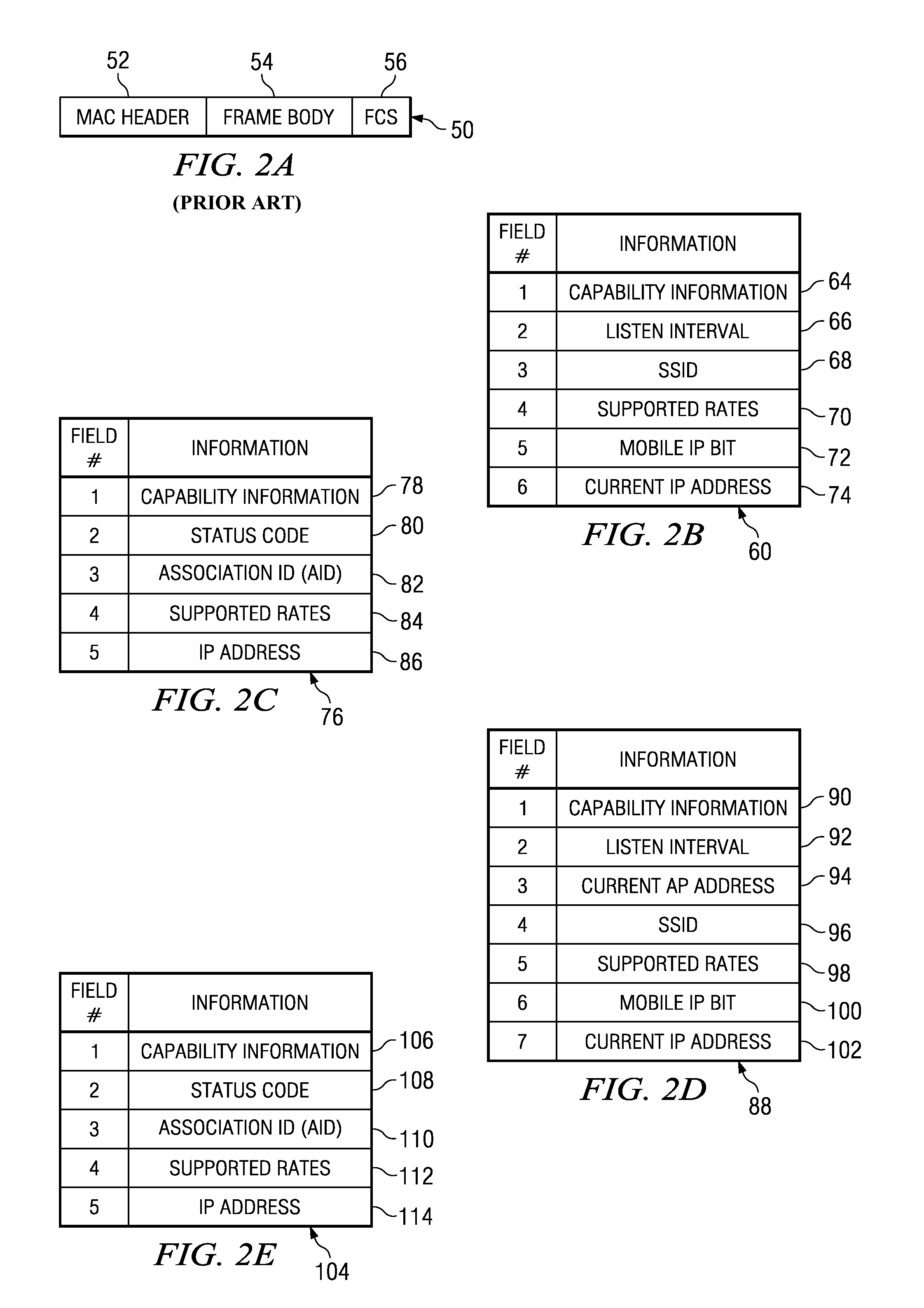IPv4/v6 address acquisition techniques for mobile terminals operating within wireless LANs
a wireless lan and address acquisition technology, applied in the field of wireless local area networks, can solve the problems of increasing power consumption of mobile terminals, inefficient use of signaling resources, and inability to determine whether or not a mobile terminal is a current ip address assignment procedur
- Summary
- Abstract
- Description
- Claims
- Application Information
AI Technical Summary
Benefits of technology
Problems solved by technology
Method used
Image
Examples
Embodiment Construction
[0013]Referring now to FIG. 1, a WLAN 10 within which a mobile terminal 12 may operate will now be described in greater detail. As disclosed herein, the WLAN 10 is configured to comply with IEEE Standard 802.11. However, it is specifically contemplated that 802.11 non-compliant WLANs may also be suitable for the uses contemplated herein. The WLAN 10 is comprised of first and second IP domains 14 and 16. Of course, it is fully contemplated that the WLAN 10 may instead be comprised of any number of IP domains and that the current disclosure of the WLAN 10 as being comprised of the first and second IP domains 14 and 16 is purely by way of example. An IP domain is a Layer-3 domain and may include any number of APs and basic service sets (“BSSs”). For example, the first IP domain 14 includes first, second and third APs 24, 26 and 28 and first, second and third BSSs 30, 32 and 34 coupled to the first, second and third APs 24, 26 and 28, respectively. A BSS is a Layer-2 domain, the members...
PUM
 Login to View More
Login to View More Abstract
Description
Claims
Application Information
 Login to View More
Login to View More - R&D
- Intellectual Property
- Life Sciences
- Materials
- Tech Scout
- Unparalleled Data Quality
- Higher Quality Content
- 60% Fewer Hallucinations
Browse by: Latest US Patents, China's latest patents, Technical Efficacy Thesaurus, Application Domain, Technology Topic, Popular Technical Reports.
© 2025 PatSnap. All rights reserved.Legal|Privacy policy|Modern Slavery Act Transparency Statement|Sitemap|About US| Contact US: help@patsnap.com



